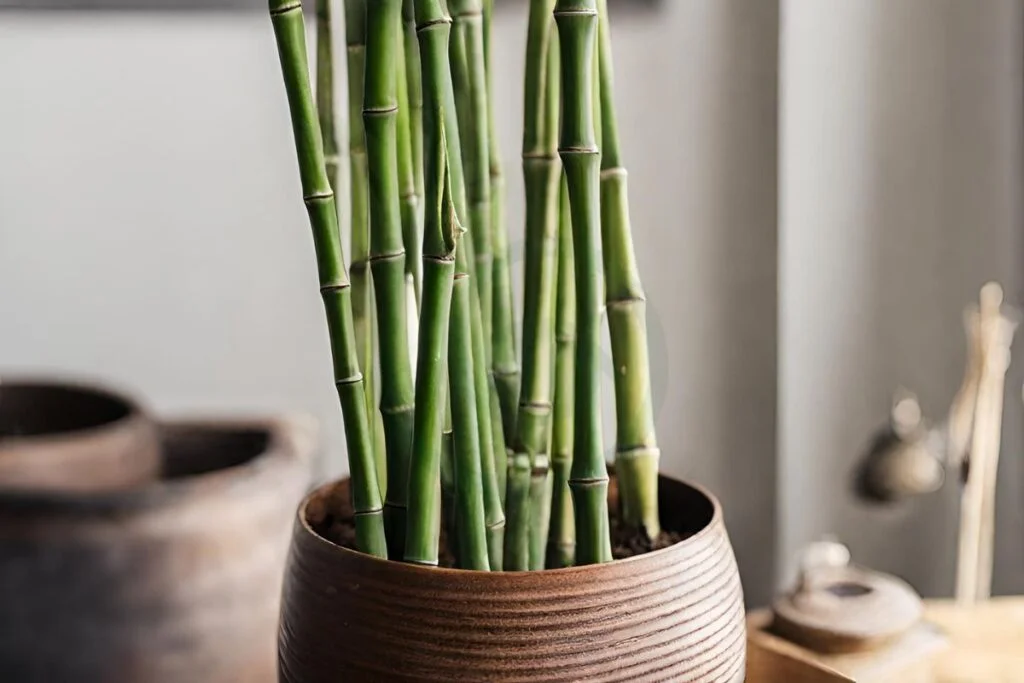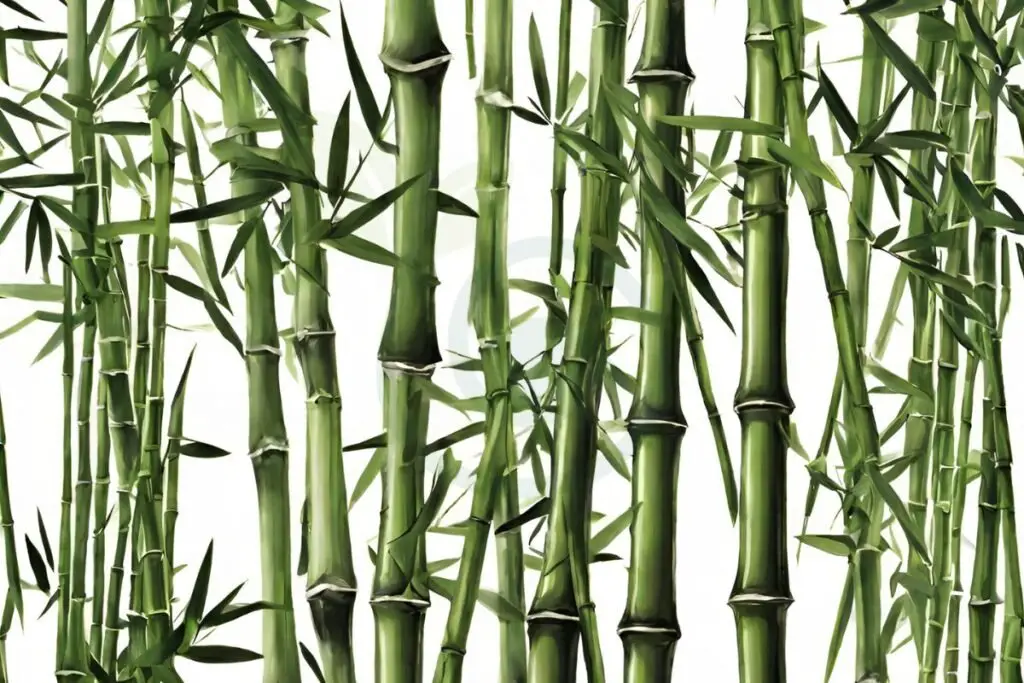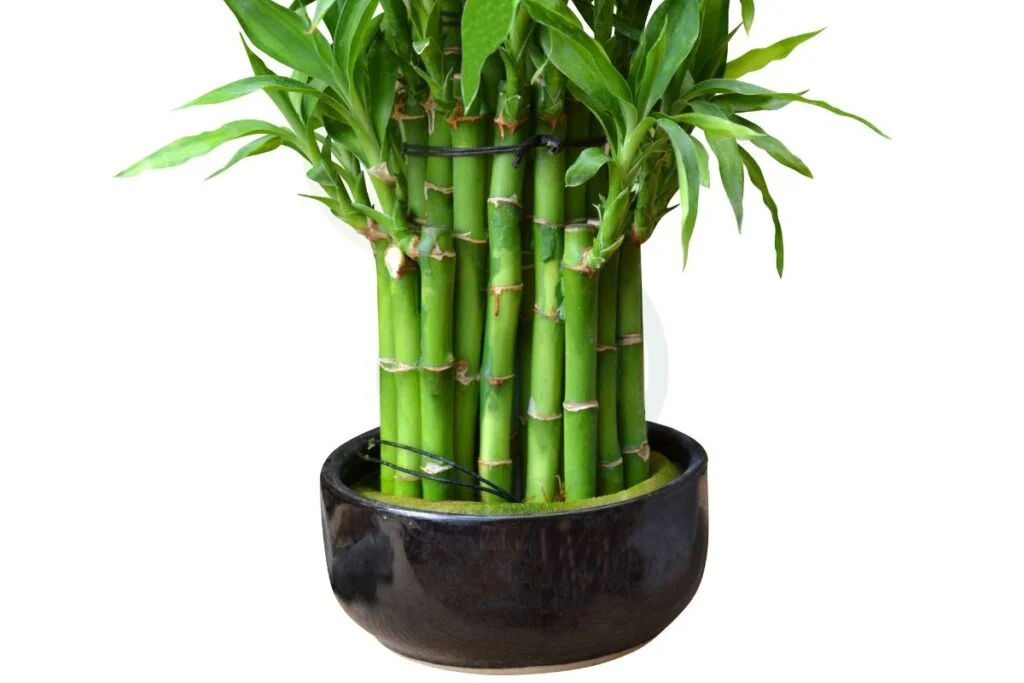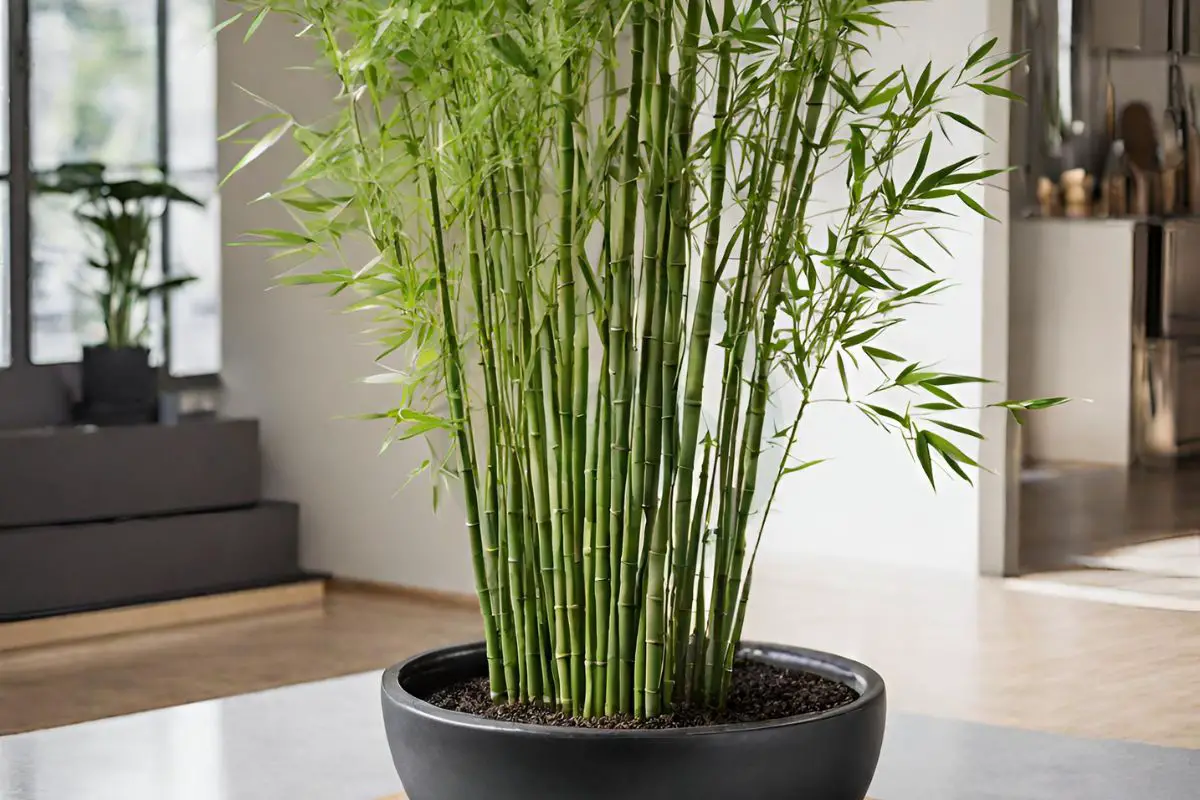Did you know that bamboo can grow up to 3 feet in just 24 hours? If you're looking to add this fast-growing and elegant plant to your space but are short on garden area, don't worry - growing bamboo in a pot is a fantastic solution.
Key Takeaways
- Choose the Right Bamboo: Select a bamboo variety that suits your climate and space restrictions to ensure successful growth.
- Prepare the Pot Correctly for repotting: Use a spacious pot with good drainage to prevent waterlogging and promote healthy root development.
- Plant Carefully: Plant bamboo at the correct depth, ensuring the roots are well-covered but not buried too deeply.
- Provide Adequate Care: Regularly water bamboo, especially during dry spells, and fertilize it to maintain its health and vigor.
- Implement Advanced Techniques: Consider root pruning, repotting, and division for optimal growth, and monitor roots for signs of stress or overcrowding.
- Troubleshoot Wisely: Address issues like yellowing leaves promptly by adjusting sunlight exposure or soil moisture levels.
Choosing Your Bamboo
Bamboo Species
When choosing bamboo species for potting, focus on their growth habits and pruning to ensure they thrive. Consider the height and spread of the bamboo to match your pot size precisely. Research clumping vs. running bamboo species for better containment.
Container Size
Select containers of 10, 15, or 20 gallons for potted bamboos based on their needs. Ensure ample room in the container for root growth and expansion. Match the container size with the mature size of the bamboo plant.
Plant Quantity
Determine the number of bamboo plants to pot by considering available space and desired aesthetic. Factor in the growth rate and spread of the bamboo species before deciding on plant quantity. Think about the maintenance effort needed for multiple bamboo plants in pots.
Preparing the Pot

Selecting Containers
- Choose containers made of ceramic, plastic, or fiberglass for durability.
- Opt for containers with drainage holes to prevent waterlogging and root rot.
- Consider the aesthetic appeal and design of the containers for a visually pleasing display.
Potting Soil Mix
- Create a well-draining potting soil mix by combining decomposed manure, peat, or mulch.
- Ensure the soil mix provides adequate nutrients for healthy bamboo growth.
- Consider adding sand or rocks at the bottom of the container for improved drainage.
Drainage Importance
- Emphasize the importance of proper drainage to prevent waterlogged soil.
- Ensure the container has sufficient drainage holes to allow excess water to escape.
- Use well-draining soil mixes to maintain optimal soil moisture levels.
Planting Bamboo
Soil Preparation
To ensure healthy root development, mix compost, peat, or mulch into the soil for added nutrients. Loose and well-aerated soil is crucial for promoting optimal growth. Adding organic matter can enhance soil structure and fertility.
Plant Positioning
Position the bamboo plant at the same depth as its original pot to prevent planting too deep or shallow. Adequate sunlight is essential for the plant's growth. Consider wind direction and exposure to harsh weather conditions when deciding on the plant's placement.
Bamboo Care Basics
Watering Needs
Proper watering is essential for the health of bamboo plants in pots. Monitor the soil moisture regularly.
- Water bamboo plants regularly to maintain moist soil without waterlogging.
- Adjust watering frequency based on soil moisture levels and environmental factors.
- Consider temperature and humidity when deciding on the watering schedule.
Sunlight Exposure
Sunlight is crucial for potted bamboo growth. Ensure they receive sufficient light for photosynthesis.
- Choose a location that provides adequate sunlight based on the specific bamboo species' requirements.
- Watch out for signs of sunburn or inadequate light exposure in your potted bamboo.
- Monitor plant growth and adjust placement to optimize sunlight absorption for healthy growth.
Fertilizing Schedule
Establish a fertilizing routine to meet the nutrient needs of your bamboo plants in pots.
- Use a balanced fertilizer to provide essential nutrients required for healthy bamboo growth.
- Adjust the fertilizing schedule according to seasonal variations and growth stages of the bamboo.
- Consider the specific nutrient requirements of the bamboo species you are growing in pots.
Advanced Care Techniques

Pruning Bamboo
Prune bamboo regularly to shape it and control its size within pots. Removing dead or yellow leaves helps in stimulating new growth and maintaining plant vitality. Different bamboo species, such as clumping and running varieties, have specific pruning requirements for optimal care.
Repotting Tips
Repot your potted bamboo every two to five years to prevent root-bound conditions that can hinder growth. During repotting, consider dividing the plant to encourage fresh growth and ensure long-term health. For best results, schedule repotting in early spring before the shooting season begins.
Troubleshooting Common Issues
Yellowing Leaves
Inspect yellowing leaves for clues on the plant's health, focusing on water and light levels. Look for signs of overwatering or underwatering that could lead to discoloration. Make necessary adjustments to watering frequency and light exposure to prevent further leaf yellowing.
Inadequate care can result in stunted growth of bamboo plants. Check for potential causes like nutrient deficiencies or being root-bound. Transplant the bamboo into larger pots to provide more space for healthy growth. Regularly monitor environmental conditions and adapt care routines to foster robust growth.
Seasonal Maintenance
Winter Care
During winter, provide winter protection by moving potted bamboo plants to a sheltered area. Shield them from freezing temperatures and harsh winds to prevent damage. Reduce watering frequency in winter to avoid waterlogging and frost issues.
Summer Tips
In hot summer months, increase watering frequency to prevent soil from drying out. Ensure to provide shade or shelter for the bamboo plants to shield them from excessive heat. Monitor plant health closely and adjust care practices accordingly.
Long-Term Growth Strategies
Clumping vs. Running
Clumping and running bamboos differ significantly in their growth habits and containment requirements. Clumping bamboos grow in tight, contained clusters, making them ideal for potting due to their non-invasive nature. On the other hand, running bamboos spread rapidly through underground rhizomes, requiring more significant containment measures.
When selecting bamboo species for potting, opt for clumping varieties if you prefer easier maintenance and containment. These types of bamboos are less likely to spread uncontrollably in pots, simplifying long-term care. In contrast, running bamboos may require more effort to contain their growth within a confined space.

Space Management
To accommodate the fast-growing nature of bamboo plants, choose large pots that provide ample room for root development and expansion. Large containers not only support the plant's growth but also reduce the frequency of repotting as the bamboo matures. Strategically arranging potted bamboo plants can optimize space usage and enhance visual appeal in your garden or living area.
Consider implementing vertical gardening techniques when cultivating bamboo in pots to maximize space efficiency. Vertical structures such as trellises or wall-mounted planters offer creative solutions for growing bamboo vertically, especially in limited spaces like balconies or small gardens. By utilizing vertical space effectively, you can cultivate a thriving bamboo garden while conserving valuable floor space.
Enhancing Aesthetic Appeal
Pot Selection
When selecting pots for growing bamboo, prioritize those with adequate drainage holes to prevent waterlogging, which can lead to root rot. The right pot material, size, and design are crucial for the optimal growth of bamboo plants. Consider pots that not only support growth but also complement the overall decor and style of your garden or living space.
- Opt for pots with proper drainage to avoid waterlogging.
- Choose materials, sizes, and designs that support bamboo growth.
- Select pots that match the aesthetics of your garden or living area.
Arrangement Ideas
For a visually appealing display, get creative with arranging potted bamboo plants both indoors and outdoors. Mix different bamboo species together for a diverse look that serves as a focal point in your space. Add decorative elements like pebbles, rocks, or ornaments to elevate the aesthetic appeal of the bamboo arrangement.
- Experiment with various ways to arrange potted bamboo plants.
- Combine different bamboo species for a visually striking display.
- Enhance the beauty of your arrangement with decorative elements like pebbles and ornaments.
Final Remarks
As you embark on your bamboo-growing journey, remember the critical steps from choosing the right bamboo variety to mastering advanced care techniques. By following our guide, you are equipped with the knowledge to nurture thriving bamboo plants in pots. Ensure your bamboo's health by implementing seasonal maintenance and long-term growth strategies while enhancing its visual appeal for a stunning display.
Take action today and apply these expert tips to cultivate flourishing bamboo in your pots. Share your newfound expertise with fellow gardening enthusiasts and continue exploring the world of container gardening for endless possibilities. Your dedication will yield not only beautiful bamboo but also a rewarding sense of accomplishment in your green oasis.
Frequently Asked Questions
How do I choose the right bamboo for my pot?
When selecting bamboo for your pot, consider dwarf or clumping varieties like Bambusa multiplex or Fargesia. These types are more suitable for container growth, staying compact and manageable in size.
Can I use any pot for growing bamboo?
Choose a large, sturdy pot with drainage holes to prevent waterlogging. Plastic or ceramic pots work well. Ensure the pot is at least 18 inches deep to accommodate the bamboo's root system.
What is the best way to plant bamboo in a pot?
Plant your bamboo in well-draining soil mixed with compost. Place the bamboo in the center of the pot, ensuring it sits at the same depth as it was in its nursery container. Water thoroughly after planting.
How often should I water my potted bamboo?
Water your potted bamboo regularly, keeping the soil consistently moist but not waterlogged. Check the top inch of soil; if it feels dry, it's time to water. Adjust watering frequency based on environmental conditions.
How can I enhance the aesthetic appeal of my potted bamboo?
To enhance your potted bamboo's visual appeal, consider adding decorative stones or mulch around the base of the plant. You can also place the pot on a stylish stand or incorporate it into a garden display for added beauty.
Image Source: Paid image from CANVA


